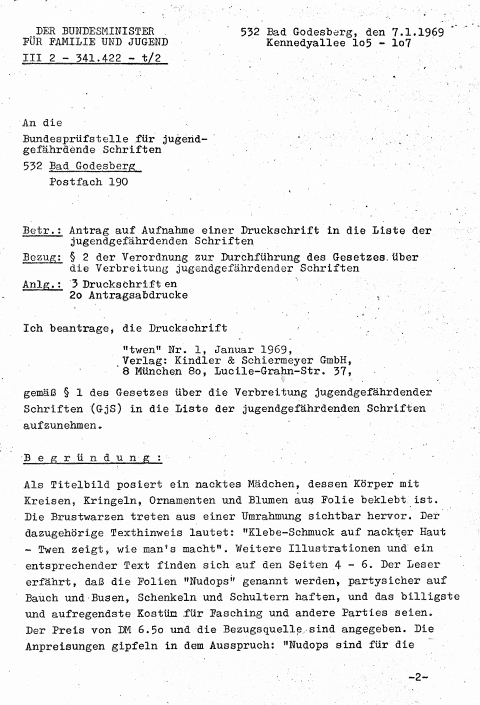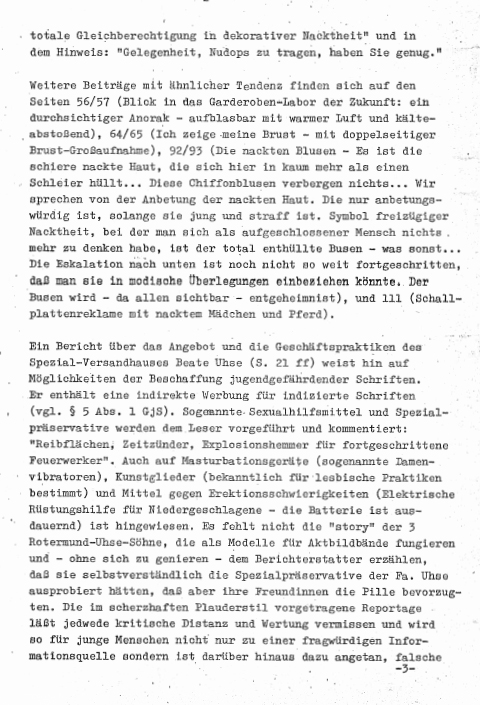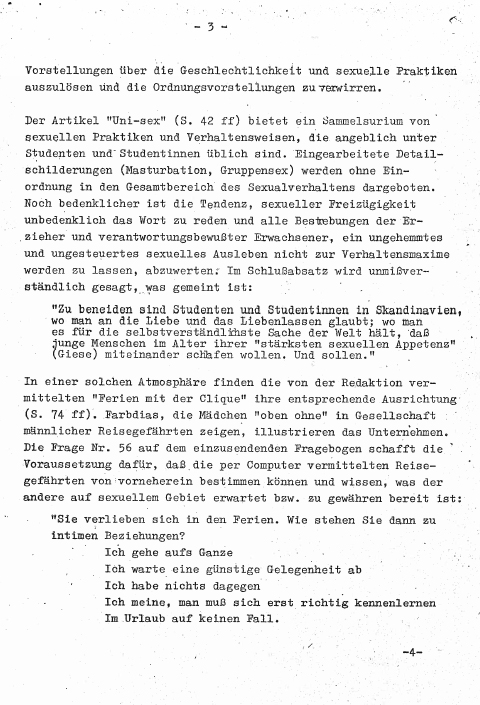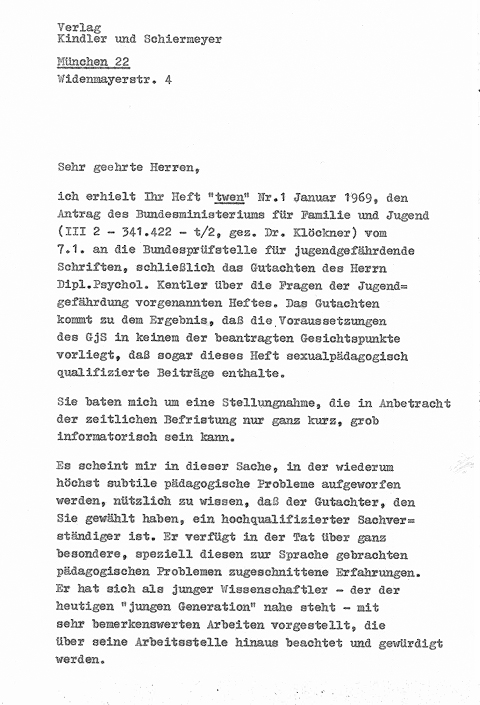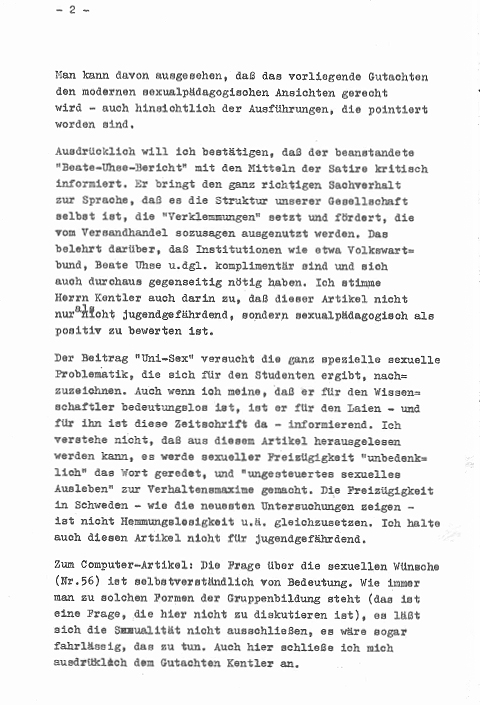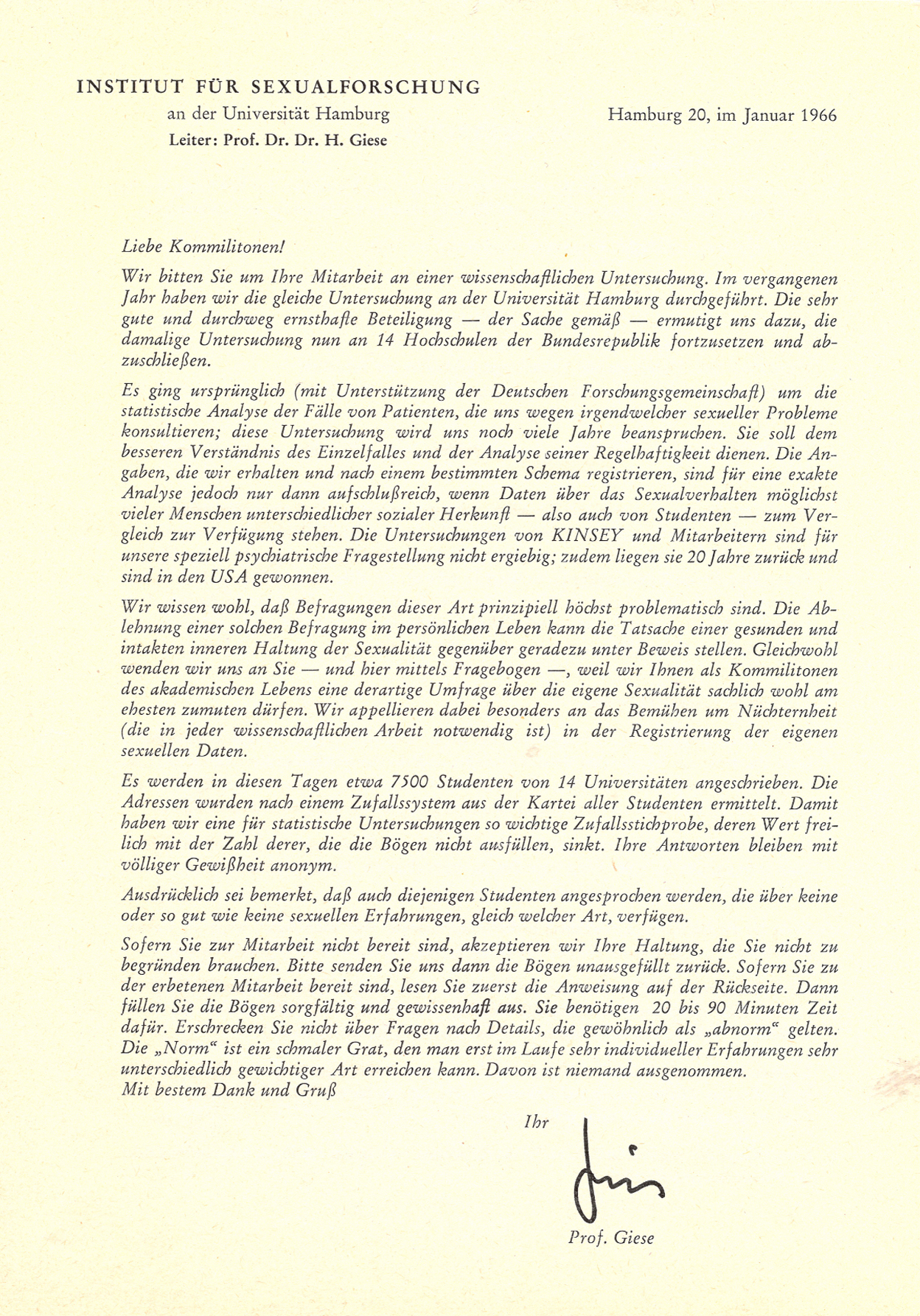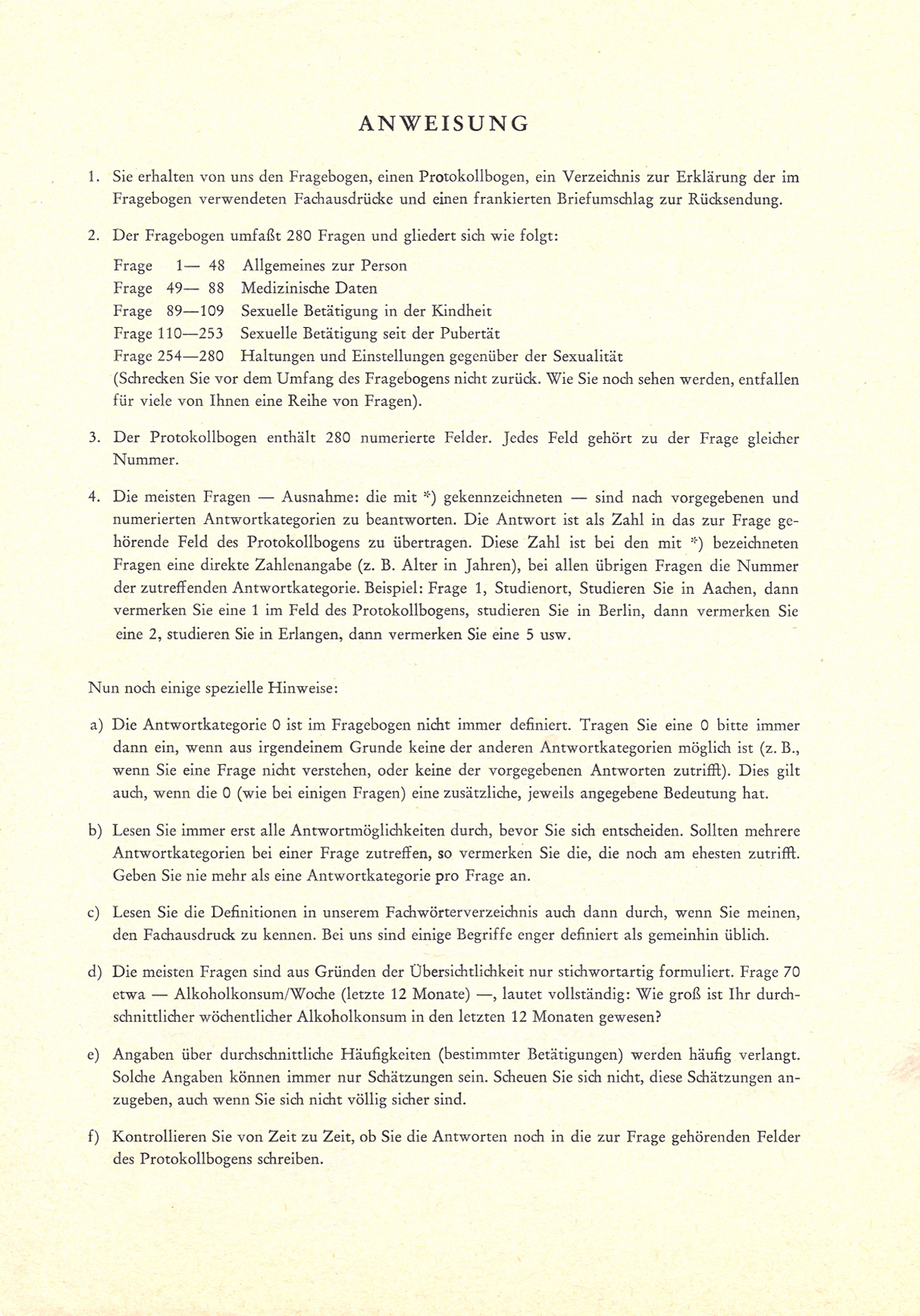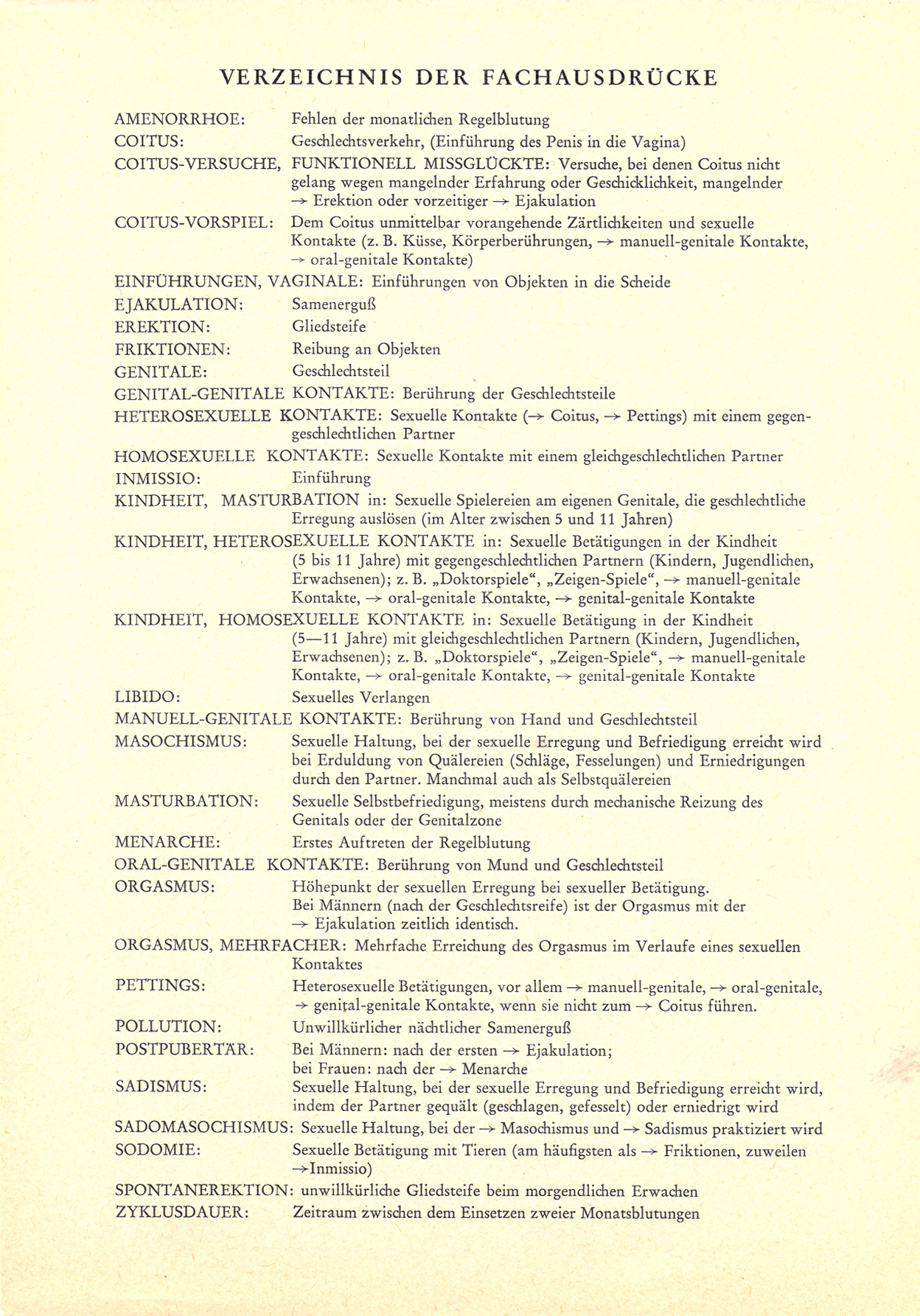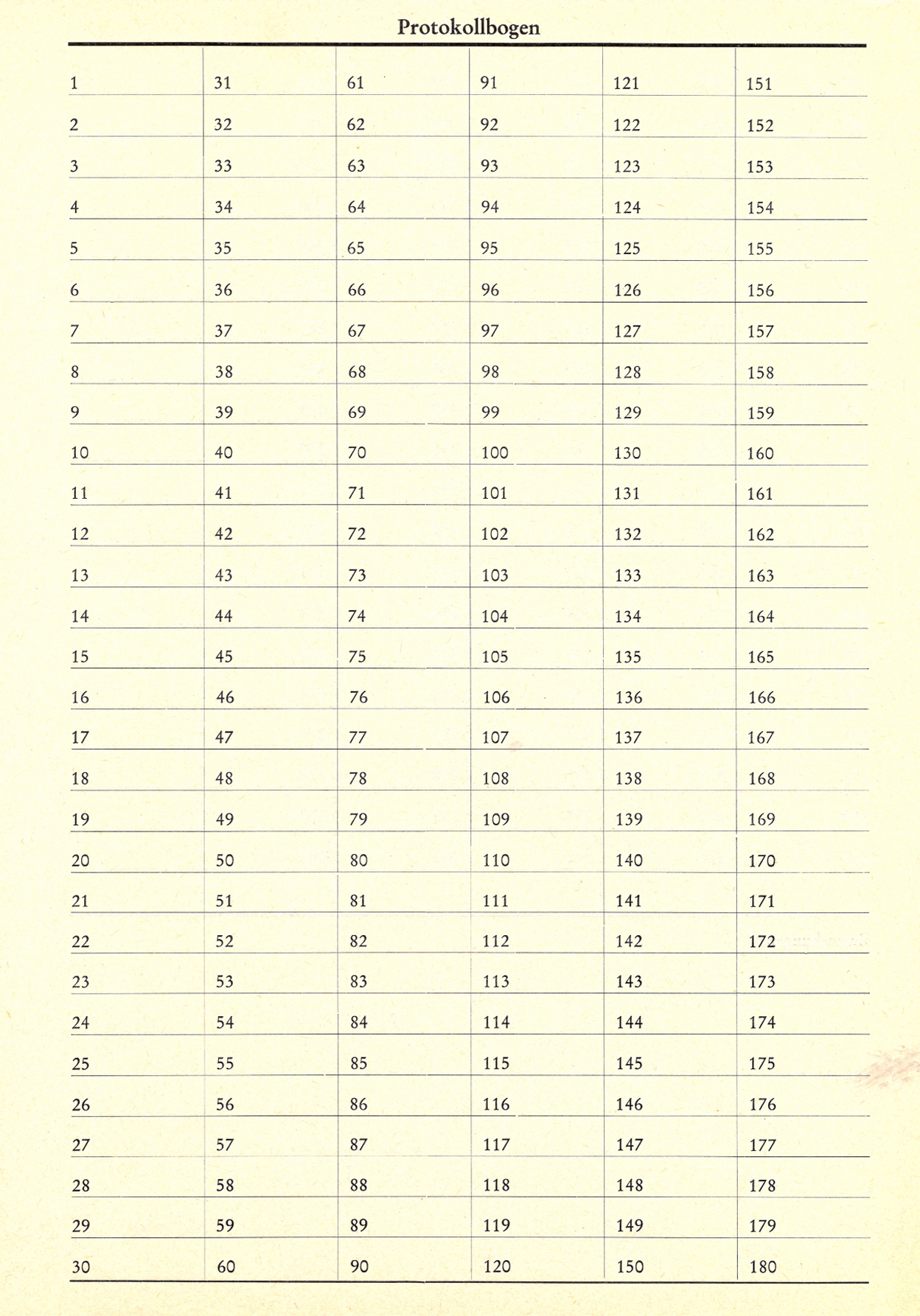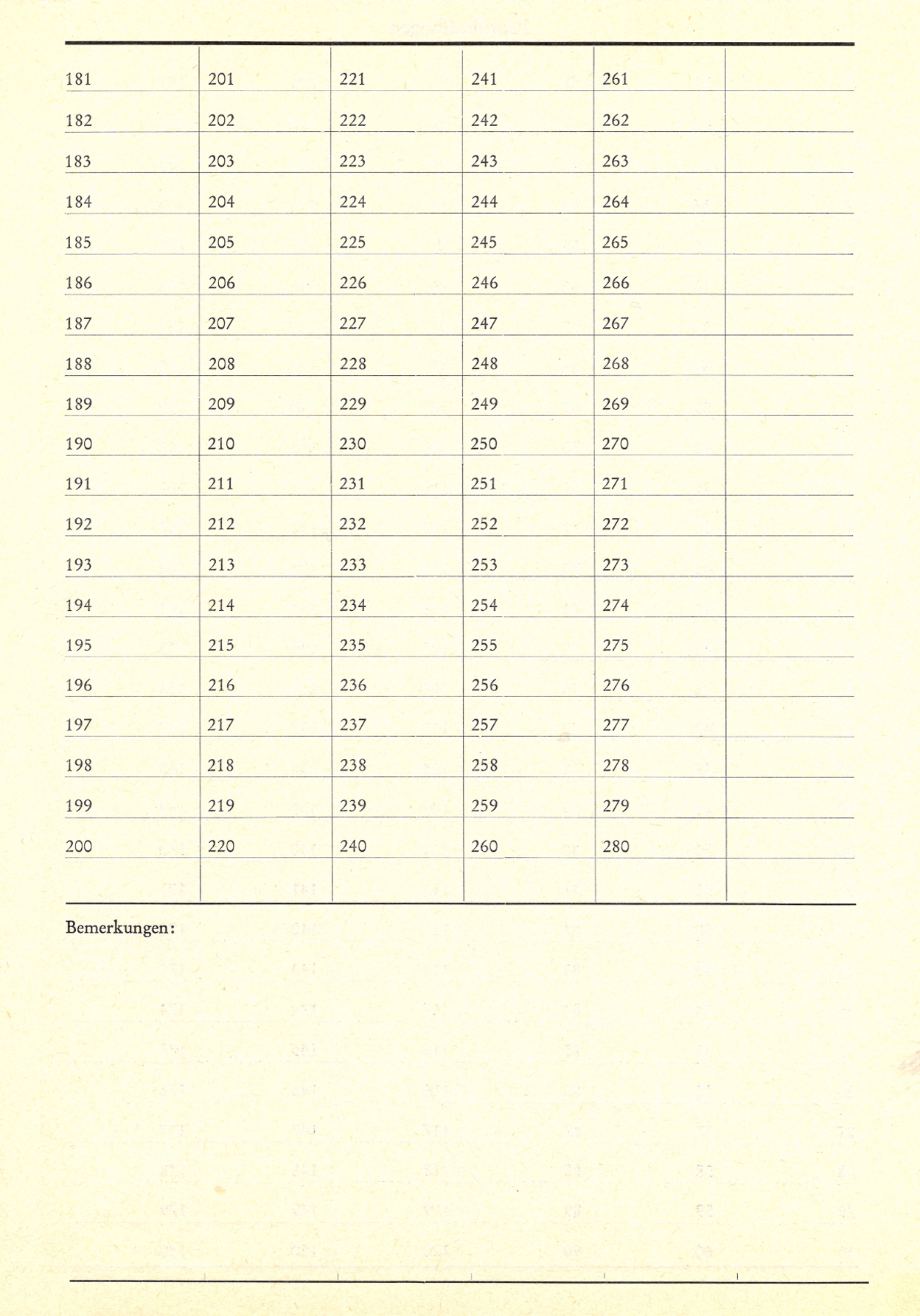Sex and gender
Sex and gender
Sex (biological) and gender (sociological) are different aspects of a person’s sexual identity. Society’s gradual acceptance of diversity is also reflected in our equal opportunity work. What began as an effort to advance women has expanded to include gender, diversity, and the compatibility of work and family. At the University Medical Center Hamburg- Eppendorf, the interdisciplinary Transgender Center provides Germany’s only holistic care for people seeking help with their gender identity. Its special centralized out-patient clinic is housed at the long-standing Institute for Sex Research and Forensic Psychiatry in the Faculty of Medicine, where Hans Giese successfully established sexual research as an academic discipline in the 1960s.
New views of sexuality
From 1959, Hans Giese ran the only German institute for sexual research. Additionally, the psychiatrist and sex researcher was a staunch advocate for sex education and tolerance in a society that was just then growing more liberal. He served as a court expert, a reviewer for the Federal Review Board, and a scientific expert for the media. Today, research and treatment at the Institute and its outpatient clinic for sexual health and transgender care in the Faculty of Medicine still represent and foster acceptance of sexual diversity.
Equal opportunity: from women’s to gender studies
Inspired by the new women’s movement in the 1970s, the University began in the 1980s to establish policies and programs to support women. They are now firmly anchored in our equal opportunity plans. Between 1993 and 2018, the share of women professors increased more than five-fold (from 6% to 31%). Last year for the first time more women than men were appointed to professorships. Thanks to the efforts of our scientists and scholars, topics in women’s and, later, gender studies have found their way into the standard curricula of many subjects.
“Don’t panic...”
The 280 questions about respondents’ sexuality included ones on homosexuality and sadomasochism, impelling Hans Giese to warn the students he wrote to in 1966. Since then, surveys on student sexual behavior have been conducted roughly every fifteen years. The goal is to research social change—something which the questions being asked already reflect.
Cover letter and questionnaire from the Institut für Sexualforschung, a sexology research institute at Universität Hamburg, 1966, Gunter Schmidt; Punch card to evaluate the questionnaire, 1966; Hamburg study on student sexuality, “Studentische Sexualität im Wandel,” questionnaire, 2012
University report
This Hamburg study was based on the Kinsey Report published approximately twenty years earlier. The Kinsey Report took a close look at the sexual behavior of men and women. The 2019 interview- based study “Gesundheit und Sexualität in Deutschland,” a study of health and sexuality in Germany, harks back to the beginnings of quantitative sexual research under Giese while for the first time analyzing the entire German population.

Universität Hamburg, Foto: Plessing/Scheiblich
Hans Giese, Gunter Schmidt: Studentensexualität. Verhalten und Einstellung, 1966
The last interview with Hans Giese (1920–1970)
Researchers met at the Institut für Sexualforschung to discuss the definition and impact of pornography. Previously associated just with the University’s psychiatry clinic, the institute would become an integral part of the University. Giese’s long-cherished wish came true only after his death.
Der Spiegel, Vol. 24, No. 32, 3.8.1970, Universität Hamburg Hans Giese (center) and his colleagues Gunter Schmidt (third from left) and Volkmar Sigusch (second from right) speaking with three Spiegel colleagues, 1970
Lewd or educational?
Hans Giese believed it was the latter when the publishers of the liberal-minded youth magazine twen asked him in 1969 for an expert opinion on their January edition. Publishing companies and erotic mail order companies alike sought the sex researcher’s expertise.
Of sex education and commerce
During the so-called “sex wave” starting in the mid-1960s, Giese cooperated closely with the press, radio, and TV to provide the public with sound scientific knowledge of sexuality. At the end of 1968, Giese felt his name was being exploited increasingly for marketing purposes and retreated from public life.
Neue Revue, No. 37, 10 September 1967
Man or woman?
A study at the Institute of Sex Research and Forensic Psychiatry confirmed the findings made by American researchers thirty years ago: genitals, and especially the penis, play an important role in assigning maleness and femaleness. The penis is simply more difficult to ignore than the vulva— figures with a penis are almost always identified as male.
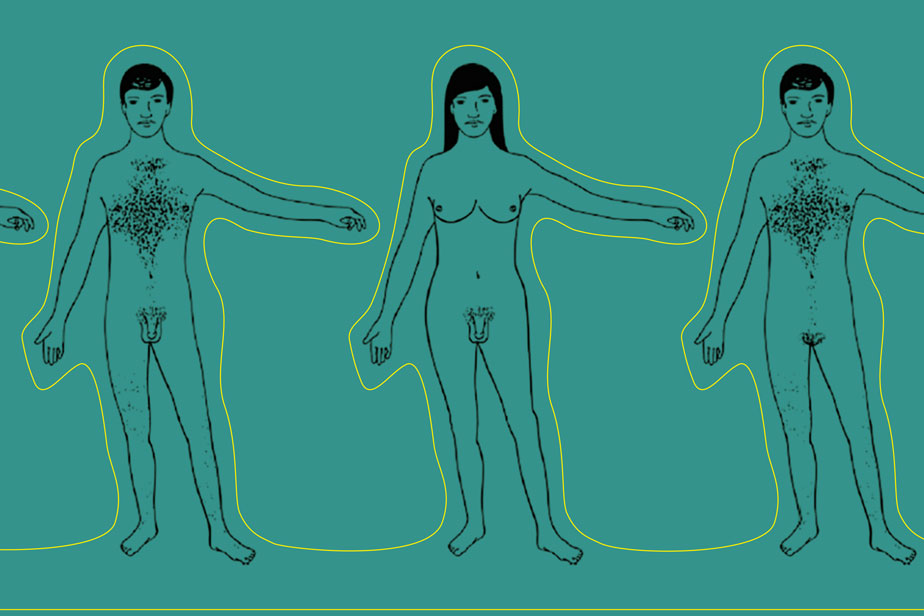
in: PLoS ONE 13(3), 2018 (e0193616)
Various combinations of typically female and male characteristics. From: F. Wenzlaff, P. Briken, A. Dekker: If there’s a penis, it’s most likely a man.
Helpful interaction
This special outpatient clinic for sexual health and transgender health care offers psychotherapy and medical help, for example, for sexual malfunction or unusual sexual orientation. It also provides care to trans patients seeking treatment and the Transgender Center’s holistic health care.
Leaflet from the Interdisciplinary Transgender Health Care Center Hamburg, 2019
Sex reassignment
Transgender people feel that their gender differs from the one assigned to them at birth. If they wish, they can use implants to create an appearance that reflects their inner gender experience. For transgender women, a hollow is formed and covered with skin from the penis; the glans is transformed into a clitoris and the skin covering the testicles is made into labia. For transgender men, the labia are formed into a scrotum. The penis is usually formed using skin from the lower arm; a prosthetic pump makes it possible to have an erection. These radical transformations are the culmination of a long decision-making process.
Breast implants, prosthetic penis
More than male and female
In the discourse on sex and gender, the Institute of Sex Research and Forensic Psychiatry advocates for the recognition of greater diversity and points to the complex interplay of biological conditions, social roles, personal identity, and sexual orientation in the creation of gender identity.
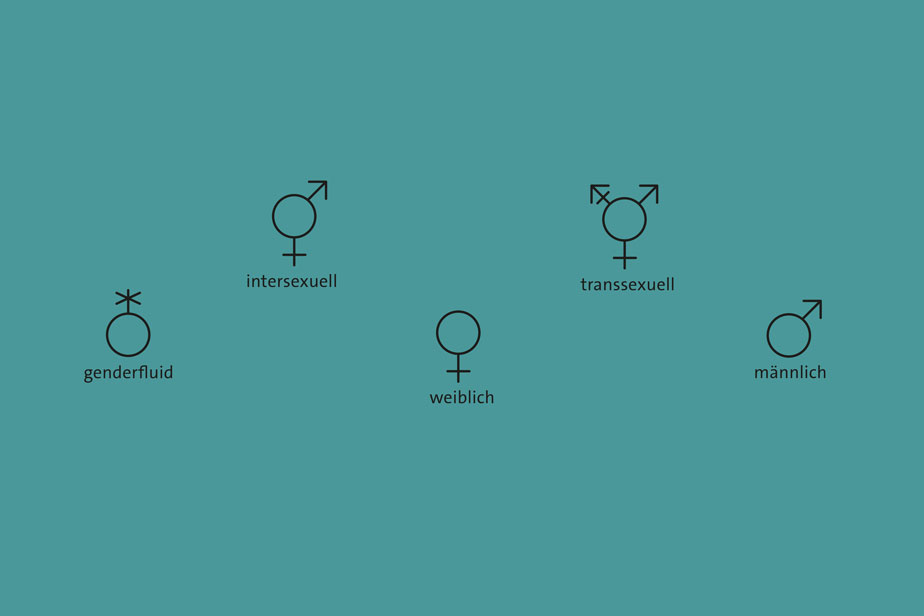
Noun Project Inc.
A few symbols for various gender types
Science looks at sex and gender
Thirty years ago, the creation of a cross-university commission for women’s studies and research on women in Hamburg was unique in Germany. The commission published a women’s course catalog that, at first, consolidated courses specific to women, and later those on sex and gender research and gender and queer studies.

Universität Hamburg, Universitätsarchiv und Zentrum GenderWissen, Foto: Plessing/Scheiblich
The first and last women’s course catalog, Winter Semester 1984/1985 and Winter Semester 2004/2005
Twenty years of research on women and gender in Hamburg
The coordinating office (today: Zentrum GenderWissen) of the commission on women’s studies and research on women also organizes women’s studies in Hamburg, a five-semester advanced training program for women following the family phase. For the University’s anniversary, former participants sent individual cloth patches later worked into a quilt.

Universität Hamburg, Zentrum GenderWissen, Foto: Plessing/Scheiblich
Album with greetings from women’s studies participants in Hamburg, 2004
“How do women use language...”
“... and how do women use language?” Hamburg professor Schmidt-Knaebel gave a nuanced analysis of this very question in her lecture. She emphasized how important it is “that we women are able to harmonize the expression our professional sense of self and our female-ness.”
Susanne Schmidt-Knaebel, Frauen und Sprache,
Linguistic justice
German is a gendered language. For the sake of linguistic fairness, however, the author of this thesis used a special form that includes both male and female—an approach that required the approval of the then-vice president. Today, the Equal Opportunity Unit discourages the use of this special form, advocating instead for other writing approaches that express and reflect the equality of all genders.

Universität Hamburg, Foto: Richard Ohme
Helgard Anders, Frauen in der betrieblichen Weiterbildung. Eine Befragung Hamburger Unternehmen, Magister thesis 1989; Recorder and cassettes with interviews, 1988/1989
From the magister to the magistra
In the wake of the University’s first guidelines to promote equal opportunities for women in 1985, efforts were made to make women more visible in the language. For example, the title of “Magistra” was introduced for theses written by women. The title was still not in wide use four years down the line, due partly to the fact that diplomas were issued by individual departments.
A Magistra artium diploma from Universität Hamburg, 1989
Disproportionate development
In 1984, Universität Hamburg appointed its first female vice president; it took another good twenty years for a female president to take charge. It also took a long time for the programs introduced in the 1980s to bear fruit and see an increased number of women appointed to professorships. The situation for students was completely different: since 1999, there have been more, and increasing numbers, of women compared to men.
Development of gender relationships among students and professors since 1919
